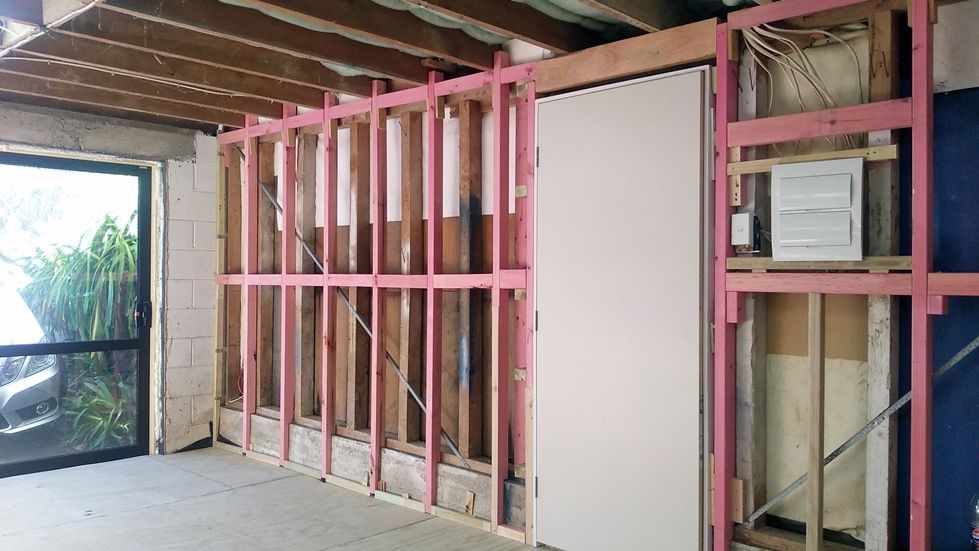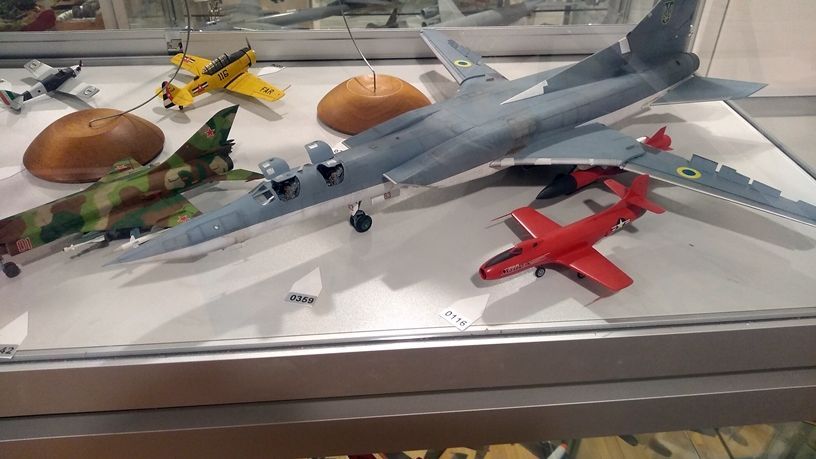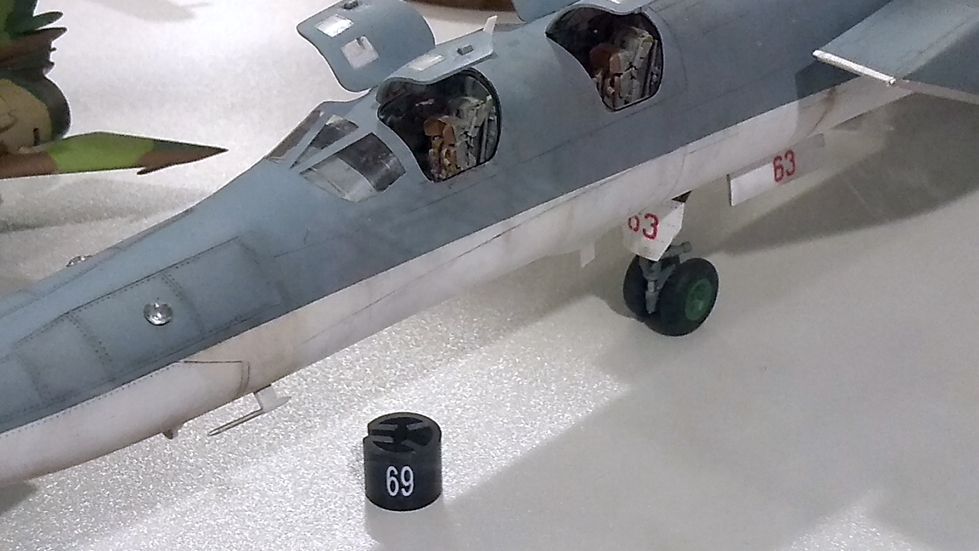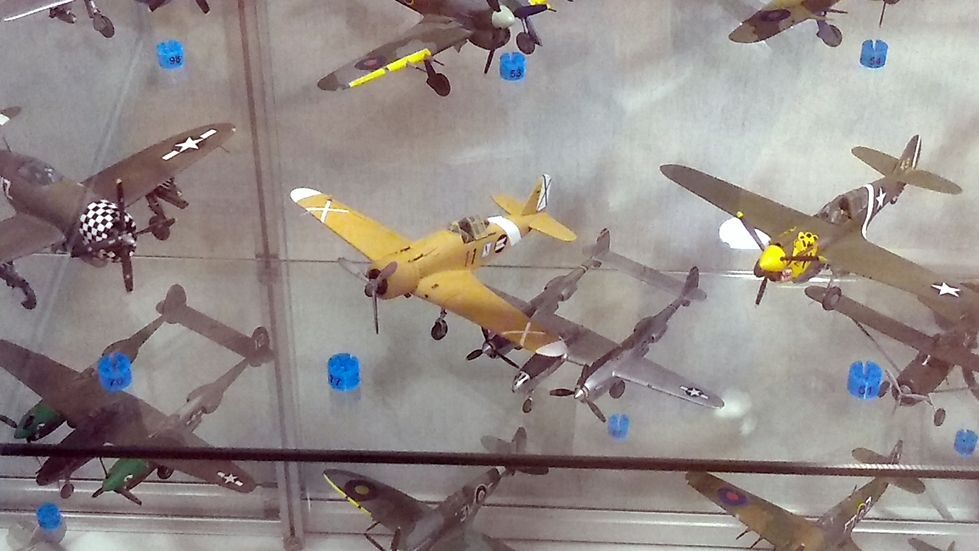New Paragraph
Converting a garage into a gallery was the easy part...

This initial blog post is significantly longer than I plan for future entries, as there's a great deal to discuss with only a month remaining until we open to the public, especially with Christmas and New Year right in the middle.
Transforming a basement garage over the course of five hundred hours in seven weeks, all while keeping it a secret from my wife during her time abroad, initially seemed like the most daunting aspect of this project. The However, upon finishing that phase in August 2024, I shifted my attention to "The 1/72nd Scale Experience" including a digitally interactive component, as compiling information for nearly 450 exhibits to present alongside each one was impractical.
This endeavour involved diligently searching the internet to locate hundreds of my online build logs and articles dispersed across various modelling forums. I then integrated one or sometimes multiple hyperlinks—often spanning several posts for a single build—into my modelling database. Additionally, I had to hunt for, copy, and paste over 400 Wikipedia links. Finally, I developed an online and interconnected photo gallery for each exhibit, offering visitors extra views and close-ups to complement the live, yet behind-glass, perspective available to visitors.
An additional layer of complexity arose when I attempted to import over 1,300 hyperlinks from an Excel spreadsheet into my Access database. While Excel is typically used for data imports and exports with Access, and the process is generally simple, the integration of hyperlinks poses its own unique challenges. Although both applications are part of the MS Office suite, it was necessary to write some macros in VBA to extract the URLs and reassemble them with the appropriate displayed text. Each of these tasks presented new challenges that I needed to learn and master as I experimented with various formats. Additionally, I created a downloadable exhibit list that can be accessed on smart-phones via a QR code, providing an alternative to retrieving it through the website.
Another task that turned out to be significantly more challenging than I had anticipated was physically numbering each exhibit with a unique identifier linked to the exhibit list detail sheet. My initial approach involved trimming the pointed ends of plastic pot-plant labels to create small plastic arrows measuring approximately 20x10mm, onto which I affixed printed self-adhesive numbered labels sized 5x10mm. While this idea had potential, my difficulties with shaky hands due to Parkinson’s meant I frequently had to remove improperly positioned labels and attempt better placement, leading to increasingly frayed labels. Additionally, I encountered two more issues: some labels were unreadable when placed on the highest shelves, and the scattered white plastic arrows on each display shelf created a cluttered appearance in the cabinets.
I experimented with inverted ‘V’ signs, with each face measuring 10x5mm, but found these challenging to fold accurately, and placing the labels proved even more demanding than with the larger arrows I had already tried. I estimated that I would need to produce 1,350 to ensure that at least 450 would meet a satisfactory standard for use. I then purchased 600 plastic discs in six colours, each numbered from 1 to 100 and supposedly measuring 10mm in diameter according to their online listing, but upon delivery, they turned out to be 37mm across and far too large.
The solution I discovered was to purchase small 600 plastic cylinders, each measuring approximately 6x4mm and available in six colours, numbered 1-100 (with the number appearing twice on opposite sides of the cylinder). These cylinders are designed to clip onto the wire necks of clothes hangers. From the various options I tested, these stood out as the best in terms of print quality and consistency, and due to their smaller size, they were the least obtrusive, although the display cabinets appear more aesthetically pleasing without them.
Once I resolved the issue of exhibit designators, I tackled the next challenge: their placement. Again, unsteady hands and tight spaces between glass shelves created tense moments, as all modellers dread damaging delicate and often minuscule components of finished models, since repairs are seldom seamlessly concealed. After ensuring each cabinet had designators for all its exhibits, I needed to note the designators and their corresponding exhibits for entry into my database. However, a challenge I face, like many with Parkinson's, is a condition known as micrographica, where my handwriting deteriorates into tiny scrawl after just a few letters, rendering my notes a stark contrast to even the most poorly written prescriptions! Consequently, inputting nearly 450 locations became a more complicated task than one might expect.
Despite the challenges I've faced, the support and encouragement from Keely Jenkins, the Fund-raising Assistant at the Neurological Foundation, along with Jamie Twig, the ever-assisting Founder of 543 Website Design, have been invaluable as I navigate the steep learning curve of designing my own website. I must also acknowledge Scott T. Hards, known by many modellers through his long-standing connection with Hobby Link Japan; I reached out to him in his role as the Overseas Agent for the renowned aviation artist, Mr. Shigeo Koike. As Mr. Koike has always been my favourite aviation artist, I was overjoyed when Scott granted me permission to showcase Mr. Koike’s stunning images on my website, free of charge. I'm confident that all visitors will agree that these visuals enhance my site with a beauty that any aviation enthusiast would cherish.
There are still a number of tasks awaiting completion. One of them is the creation of a dedicated scale modelling advice and resources page. I aim to provide guidance on encouraging young or first-time modellers to sidestep common pitfalls and fully embrace the hobby as they develop their skills. Highlighting the advantages of club membership, collaboration in online forums, and discussion groups will be central to this page, along with tips on what to avoid. I plan to compile a list of useful online resources in various forms and offer free downloads of my articles and builds. Additionally, I envision providing a complimentary advice service, focusing on 1/72 scale kit selection and sourcing. It will take some time to refine the best format and curate the most pertinent information to feature. As my ability to type and navigate with a mouse is limited to 1-2 hours per day when medications are most effective, I have set a goal to fully develop this aspect of the website by mid-2025. In the meantime, I can offer much of the envisioned resources in person or through email upon request.





